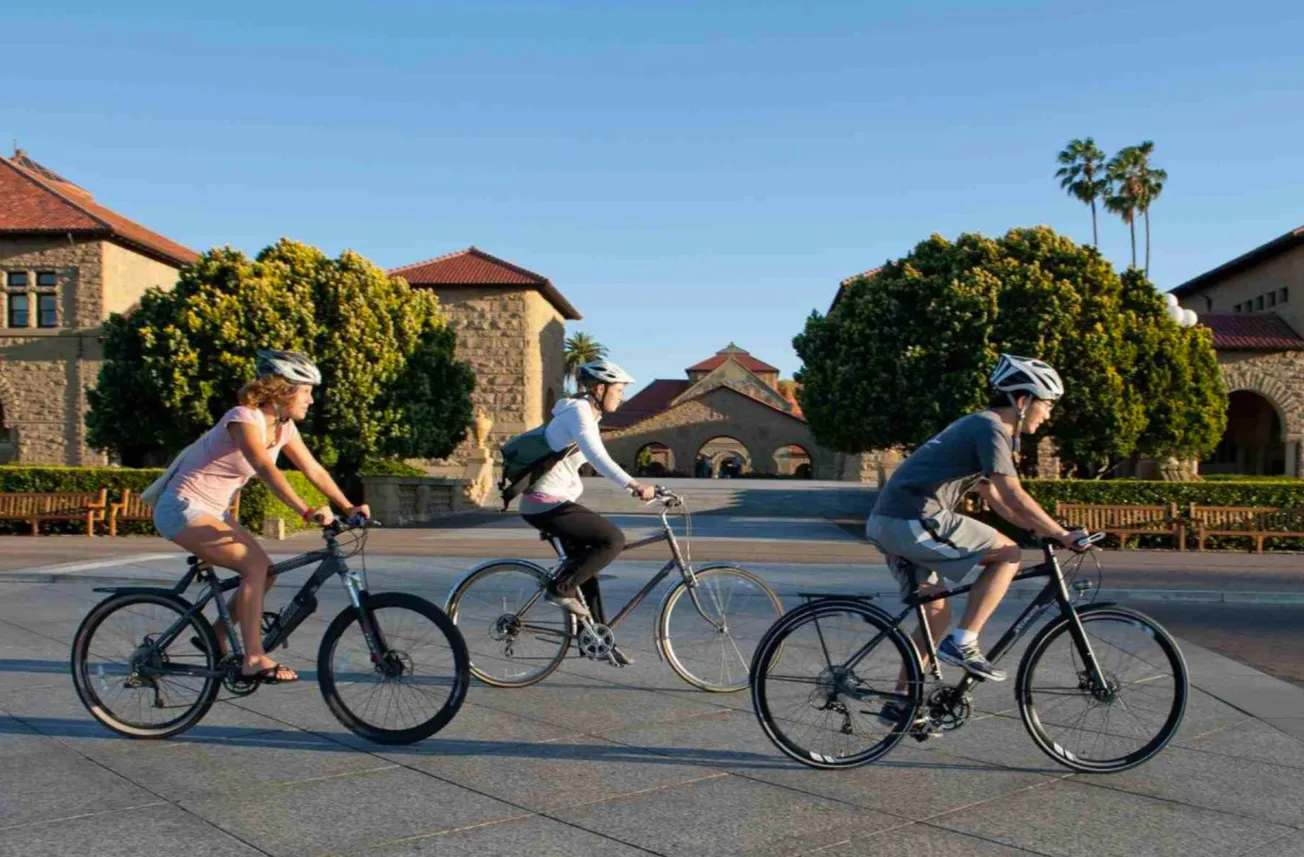Table of Contents
As a wide-eyed, overconfident freshman—in what was not such a bright idea in retrospect—I shelled out a couple hundred dollars for a shiny new e-bike, hoping that a hefty Kryptonite lock would be enough to thwart any would-be thief.
But sure enough, exactly one month into my freshman fall, my trusty e-bike disappeared. It was stolen overnight from the rack next to my dorm, in one of numerous such bike theft sprees this quarter alone. On a campus in which virtually everything is guarded by keycard access, dormitory bike racks are inexplicably unsafe. And often positioned right by the roadside, it is easy for thieves to drive by and ransack these racks with little to no resistance.
Few things are as synonymous with Stanford as bicycles. With over thirteen thousand on campus, they are practically an emblem of student life here on campus. Yet for a university so dependent on biking for students to get around, the school’s administration has failed spectacularly in providing a suitable supporting infrastructure for bikers, resulting in countless challenges and frustrations.
This sorry state of security begs the question: At a university renowned for its engineering prowess, filled with some of the brightest minds in the world, is it too much to ask that we implement a modicum of security measures to protect some of our students’ most valuable possessions? For one example, keycard-guarded barriers around the racks would be trivially easy to install. Another deterrent example, pioneered by the University of Wisconsin–Madison, could be to place GPS-equipped “bait bikes” to allow police to catch thieves and to deter future theft.
Following my bike’s theft, I proceeded to the Campus Bike Shop at Tresidder for what turned out to be another lesson in how pathetic Stanford’s approach to anything bike-related truly is. The shop, the only one on Stanford’s campus, offered me a one-week rental for $120, to tide me over until I could purchase a new ride of my own. I begrudgingly made the hefty payment, and was handed a bike with a missing kickstand and a defective chain, which I would need to constantly stop and repair. To add insult to injury, they demanded that I pay $700 if this beat-up, piece-of-junk rental bike was stolen.
A few days later, my new bike was delivered to the package center. Without any way to transport it across campus to my dorm, and with no tools to assemble it, I lugged it across Tresidder to the bike shop. Once again, I was quoted an outrageous $150 assembly fee for a bike that came mostly assembled. If that weren’t enough, the shop also estimated it would take another whole week for a rudimentary, ten-minute assembly job.
Nevertheless, not nearly soon enough, I finally had a working bicycle again… or so I thought. The front brake completely detached within two days, leaving me to slam the rear brake and fly forward to stop from colliding with traffic.
If any company in a competitive marketplace were run with the disregard for its customer experience that the Campus Bike Shop exhibits, it would probably go out of business overnight. But with the effective monopoly that the shop commands in the Stanford community, the University apparently feels that it is acceptable to swindle students for beyond lousy service.
Ultimately, such carelessness ends up hurting students with limited financial resources the hardest. It harms those students without the economic means to replace a stolen bike or to pay the exorbitant rental prices at the bike shop. For an administration so vocal about “equity” and empowering lower-income students, the University’s actions fall significantly short of its ideals when it comes to ensuring access to transportation.
There are countless common-sense steps that Stanford could take toward improving this dismal situation. In addition to physical protections around dorm bike racks where theft is most likely, the school could force an overhaul of the Campus Bike Shop’s pricing and service standards. A simple bike theft insurance plan, for instance, would prevent innocent students from receiving an unexpected bill for several hundred dollars. Far from a novel idea, personal articles policies are commonly offered by insurance companies. And with the sheer number of bikers on campus, spreading the risk of theft is only sensible and would free every student from a constantly looming financial threat.
These recommendations are but the simplest actions that Stanford could take in the bicycle department, and would go a long way toward upholding its commitment towards innovation, inclusivity, and student wellbeing on campus. Someday, perhaps, I won’t need to move heaven and earth just to get to class.









